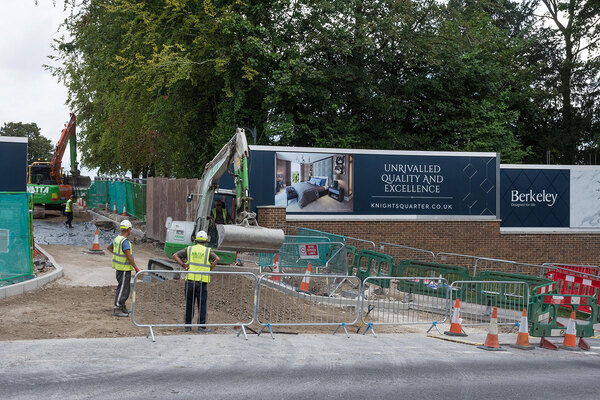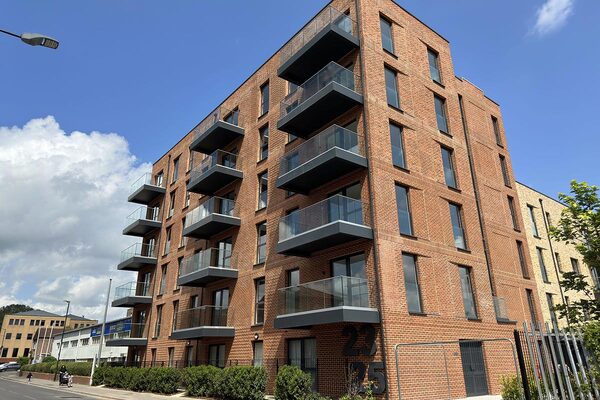You are viewing 1 of your 1 free articles
Single-family housing must be part of the UK government’s aspirations
The single-family housing market is a key tool to professionalise the private rented sector and improve the country’s housing quality, writes David Reid, managing director at Legal & General Suburban Build to Rent
Within a month of the 2024 general election, the Labour Party announced an overhaul of the planning system and confirmed its pre-election target to deliver 1.5 million new homes by the end of the next parliament in 2029.
This clear statement of intent places housing at the heart of its five missions for economic growth. With housing central to its agenda, the government will need to leverage every advantage to meet this target.
The emerging single-family housing market – low-rise apartments and family homes for rent in well-connected suburban locations – has historically played a small role in UK housing. However, it offers synergy and alignment with the new government’s goals – not only in its rapid growth to date, and further growth aspirations, but also in its objectives to professionalise the private rental sector and improve the quality of UK housing stock.
There are three key areas where the single-family market and government aspirations align.
First, professionalising the sector. Private landlords are leaving the market at a rapid pace. Recent estimates suggest that 18% of homes currently for sale were previously rental properties (compared to 8% in 2010) and that as many as 400,000 private landlords have exited the market since 2016. Changes to interest rate relief, a greater focus on tenant rights, more stringent energy efficiency requirements, and rising interest rates have all contributed to this decline, resulting in a 41% reduction in rental housing supply as compared to long-run averages.
“The single-family rental market has long adhered to the standards the government aims to establish – institutional landlords are motivated to provide high-quality service to tenants”
Replacing these lost rental homes is critical for the approximately 5.4 million private rental households in the UK, and institutional investors can play an immediate role here.
Labour has expressed its intent to improve standards in both the affordable and private rental sectors and the single-family rental market has long adhered to the standards the government aims to establish – institutional landlords are motivated to provide high-quality service to tenants. For example, Legal & General is committed to maintaining professional service; minimising void periods and leasing churn; and delivering safe, high-quality homes with features such as heat pumps to support energy efficiency, and designs that aim to support health and well-being.
Accelerating the delivery of new build-to-rent (BTR) homes, and increasing the proportion of institutionally owned and managed single-family housing in the UK, will help balance the exodus of private landlords from the market, professionalise the sector and offer occupants higher-quality homes in the process.
Second, building the 1.5 million. Declining housing delivery numbers from planning permission to new housing completions highlight the significant challenge the Labour Party faces in achieving its housing targets.
The Housing Forum’s report, Roadmap to 1.5 million new homes, suggests that 450,000 new homes must be delivered in 2029. This figure is 93% higher than current net new dwelling figures, indicating that housebuilding output must nearly double in less than five years.
The excess demand needed to meet the 450,000 homes target must also come from a range of tenures in order to address different market requirements.
This raises an important question: who will fund and build the 1.5 million new homes? House builders have adapted to market challenges and the new government has offered up supportive policy for the sector, but institutional investors also have a significant role to play in helping to accelerate housing development, driving additionality on larger masterplan sites – while accessing compelling commercial opportunities in the process.
“The excess demand needed to meet the 450,000 homes target must also come from a range of tenures in order to address different market requirements”
Third, investment growth. The new chancellor has promised a “big bang” to unlock growth and boost investment, with a focus on accessing the untapped potential of the UK pensions market as a vital source of new capital.
Institutional interest in the BTR sector is already high, driven by a critical shortfall in rental housing supply and the sector’s appealing long-term investment characteristics.
Legal & General’s recently launched Affordable Homes Fund, with commitments from Local Government Pension Schemes ACCESS and GMPF, and its investment in partnership with NEST and PGGM to deliver up to £1bn of new BTR homes, exemplify this growing demand for stable, long-term investment in affordable and rental housing.
Within the BTR sector, investors are increasingly recognising the value of single-family housing, and investment in this sub-sector has increased markedly over the past five years. In 2023, the single-family sector accounted for 40% of all BTR activity, totalling £1.9bn – a five-fold increase over 2022 investment volumes.
The single-family market is on a growth trajectory and is well positioned to supplement private for-sale and affordable housing demand. Increased investment in this sector will align with the chancellor’s growth aspirations to accelerate the delivery of high-quality homes across tenures in the UK, to help achieve the ambitious housing target that has been set.
David Reid, managing director, Legal & General Suburban Build to Rent
Sign up for our development and finance newsletter
Already have an account? Click here to manage your newsletters













